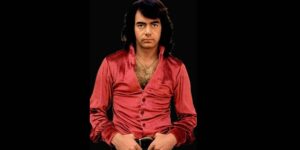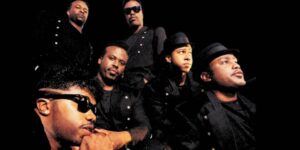The world of music is vast and diverse, with various genres emerging over the years. One of the most popular and enduring genres is the fusion of dance and pop, also known as dance-pop. This style combines the energetic and infectious rhythms of dance music with the catchy and melodic hooks of pop. In this article, we will delve into the history, characteristics, and significance of dance-pop, and explore some of the most iconic and influential artists and songs in this genre.
A Brief History of Dance-Pop
Dance-pop, as we know it today, originated in the late 1970s and early 1980s with the rise of disco and funk. The disco era was marked by the release of songs like the Bee Gees’ “Stayin’ Alive” and Chic’s “Le Freak”, which incorporated elements of dance and funk into their sound. This trend continued into the 1980s, with artists like Prince, Michael Jackson, and Madonna incorporating dance beats and synths into their music.
In the 1990s, dance-pop became a global phenomenon, with the emergence of groups like Spice Girls, Backstreet Boys, and ‘N Sync, who dominated the charts with their pop-infused dance sound. The success of these groups paved the way for subsequent dance-pop acts, such as NSYNC, Britney Spears, and Jennifer Lopez, who continued to push the boundaries of the genre.
Dance-pop is characterized by its use of catchy melodies, driving beats, and synths. The genre is known for its emphasis on danceability, with most songs designed to get listeners moving on the dance floor. The music typically features a prominent drum machine or synthesizer pattern, along with layers of guitars, keyboards, and sometimes even orchestral instruments.
One of the defining features of dance-pop is its use of hooks, or earworms, which are catchy musical phrases that stick in the listener’s head. These hooks are often repeated throughout the song, and are designed to make the music memorable and easy to sing along to.
Another key element of dance-pop is its use of vocal processing and harmonies. Many dance-pop songs feature processed vocals, such as pitch-correction and reverb, to give the singers a distinctive and polished sound. The harmonies in dance-pop music often involve layered vocals, with the singer(s) singing harmonies or backing vocals to add texture and depth to the music.
Dance-pop has had a profound impact on popular culture and music. The genre has helped shape the sound of modern pop music, and has influenced a wide range of other genres, from electronic to rock. The emphasis on danceability and catchy melodies in dance-pop has led to a focus on the songcraft and production in modern pop music, which has had a lasting impact on the way pop songs are written and recorded.
Dance-pop has also played a significant role in the evolution of music technology. The widespread adoption of synthesizers and drum machines in the 1980s helped drive the development of new sounds and styles in dance-pop, which has since been incorporated into other genres, such as electronic and hip-hop.
Throughout the years, there have been countless dance-pop artists and songs that have helped shape the genre. Here are a few notable examples:
* “I Want You Back” by the Jackson 5
* “Stayin’ Alive” by the Bee Gees
* “Y.M.C.A.” by the Village People
* “Sweet Dreams (Are Made of This)” by Eurythmics
* “Wake Me Up Before You Go-Go” by Wham!
* “Like a Virgin” by Madonna
* “Waterfalls” by TLC
* “Baby One More Time” by Britney Spears
* “Bye Bye Bye” by NSYNC
* “Sorry 2004” by Justin Timberlake
* “Uptown Funk” by Mark Ronson ft. Bruno Mars
Dance-pop has come a long way since its origins in the 1970s and 1980s. The genre has evolved and influenced various other styles, and continues to dominate the music charts today. From its catchy hooks and memorable melodies to its emphasis on danceability and catchy production, dance-pop is a genre that has captured the hearts and imaginations of listeners around the world.
In this article, we have explored the history, characteristics, and significance of dance-pop, as well as highlighted some of the most iconic and influential artists and songs in this genre. Whether you are a longtime fan of dance-pop or are just discovering the genre for the first time, there is no denying the lasting impact and enduring popularity of dance-pop in the world of music.
FAQs
What is dance-pop?
Dance-pop is a genre of music that combines elements of dance and pop music, characterized by its catchy melodies, driving beats, and synths.
Who are some of the most famous dance-pop artists?
Some of the most famous dance-pop artists include Spice Girls, Backstreet Boys, Britney Spears, NSYNC, Justin Timberlake, and Madonna.
What are some of the most iconic dance-pop songs?
Some of the most iconic dance-pop songs include “I Want You Back” by the Jackson 5, “Stayin’ Alive” by the Bee Gees, “Waterfalls” by TLC, “Baby One More Time” by Britney Spears, and “Uptown Funk” by Mark Ronson ft. Bruno Mars.
Is dance-pop still popular today?
Yes, dance-pop remains a popular genre today, with many artists incorporating dance-pop elements into their music and enjoying significant commercial success.
What are some modern examples of dance-pop music?
Some modern examples of dance-pop music include the music of artists like Justin Bieber, Selena Gomez, and Ariana Grande, as well as groups like Little Mix and Fifth Harmony.
I hope this article has been helpful in exploring the world of dance-pop!






